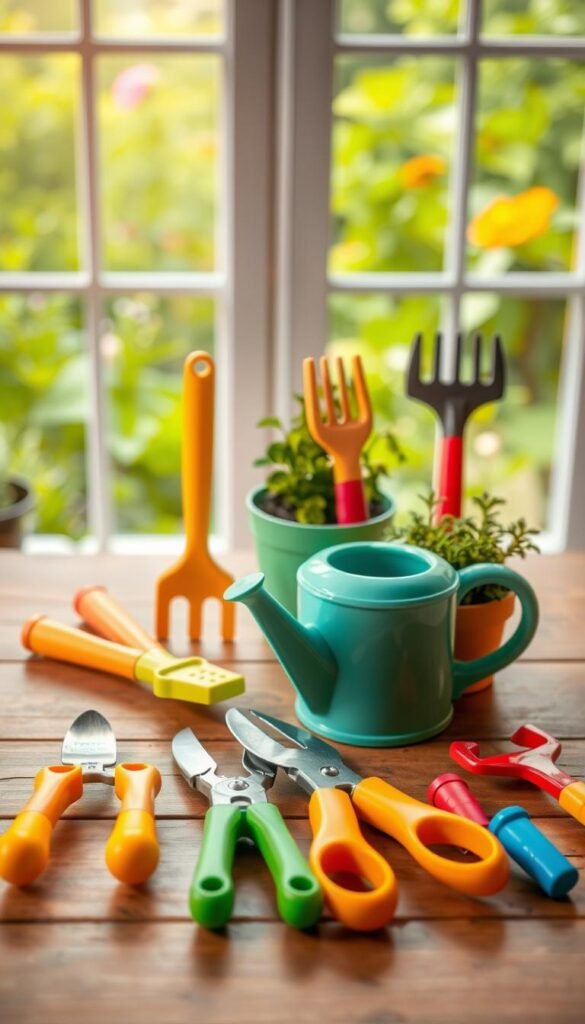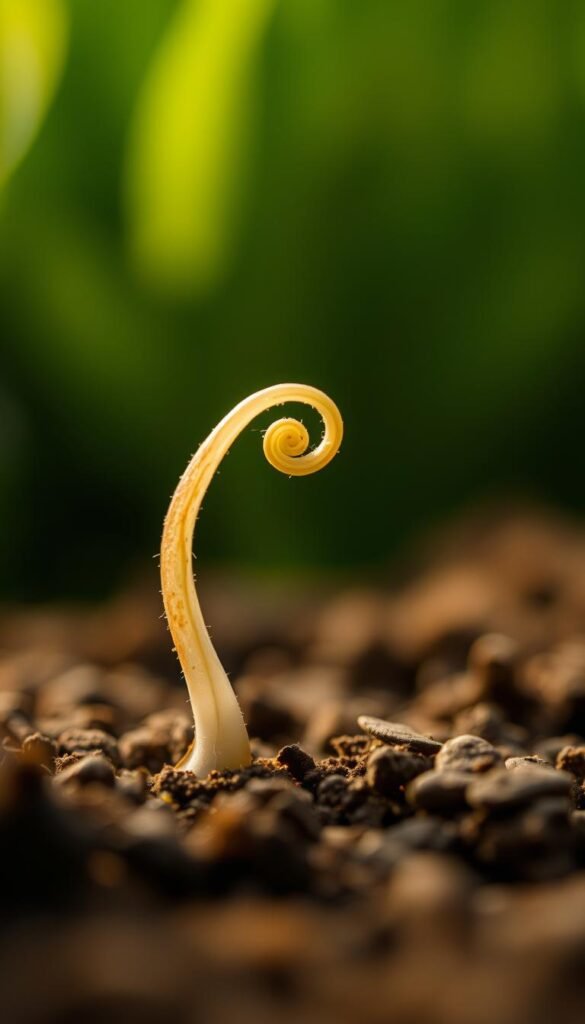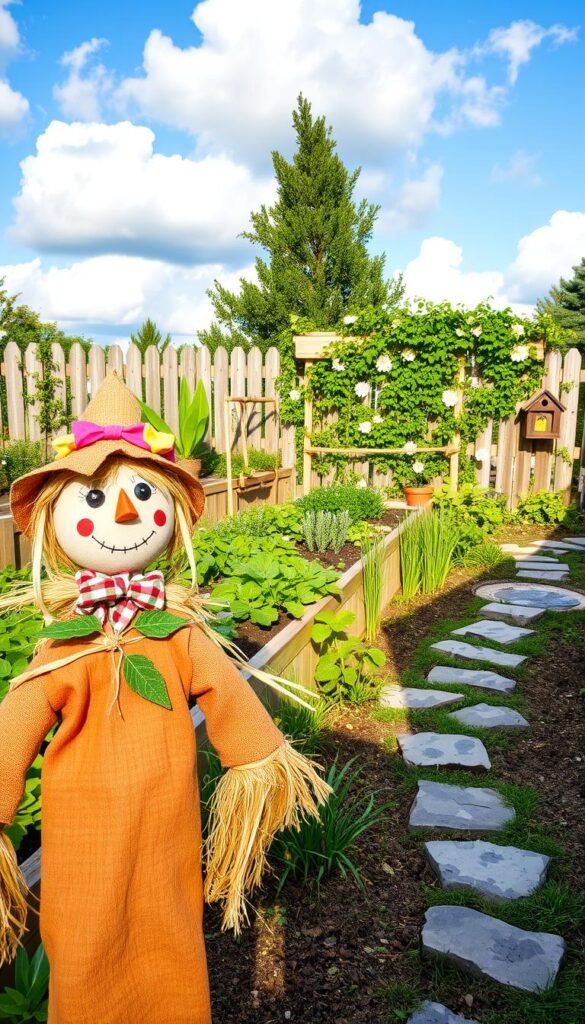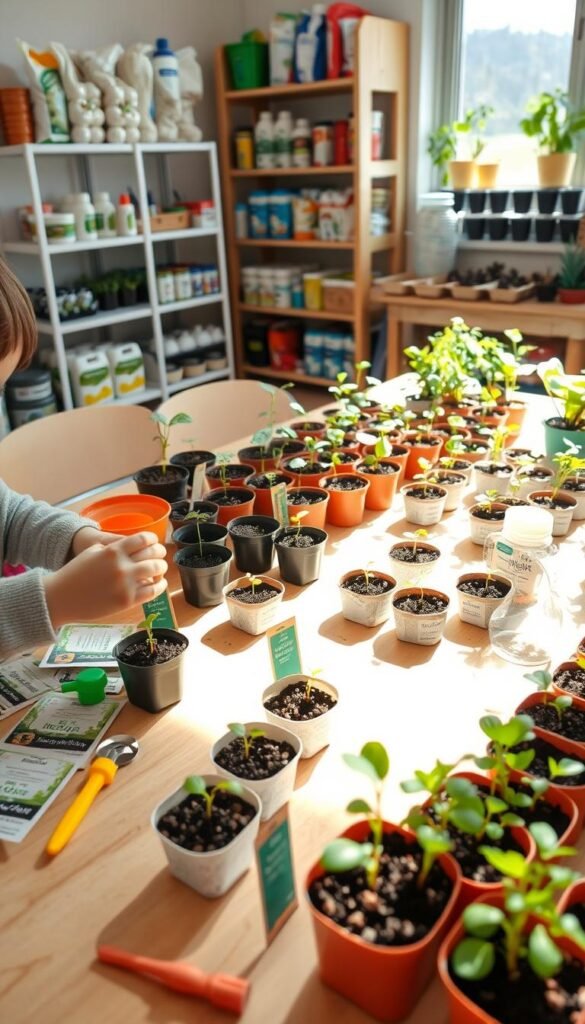Watching tiny sprouts emerge from dirt never loses its magic. When you invite young helpers to plant peas or herbs in recycled pots, you’re not just growing plants – you’re nurturing wonder. One parent shared how their basement “seed-starting dungeon” became a cherished space where their child cheered every new green shoot.
Gardening together teaches practical lessons about soil composition and watering rhythms. Mixing your own growing medium with compost creates hands-on science moments. Use clear bowls for root vegetables like radishes – kids adore seeing underground progress!
Organization matters when working with enthusiastic helpers. Label containers together using painted rocks or popsicle sticks. Choose fast-growing varieties like marigolds or bush beans to maintain interest. A windowsill herb garden offers daily observation opportunities.
Embrace the mess! Spilled dirt and water puddles fade, but memories of shared laughter endure. Our upcoming sections detail creative container ideas, seasonal planting guides, and ways to celebrate your first harvest. Let’s dig into tools and techniques that make nature exploration joyful for all ages.
Getting Started with Kid-Friendly Gardening

Planting seeds with kids isn’t just about growing plants—it’s about cultivating curiosity. When you let them choose between snap peas or zinnias, they learn to weigh options and anticipate results. Mixing soil blends becomes a science experiment, with compost and perlite transforming into a magical growing potion.
Discover the Benefits of Gardening with Your Children
Digging into gardening projects sharpens fine motor skills and introduces natural cycles. Little gardeners adore pressing oversized seeds like sunflowers into damp earth—perfect for preschool fingers. Elementary-aged helpers can manage smaller varieties like basil or lettuce. Tracking germination days on a calendar teaches patience and math skills.
Create ownership by letting them decorate pots or paint plant markers. A starting seeds indoors setup with recycled containers makes the process accessible year-round. Daily watering routines build responsibility, while observing sprouts fuels questions about photosynthesis and ecosystems.
Essential Tools and Supplies for a Successful Seed Flat
Kid-sized tools prevent frustration. Look for:
- Plastic trowels that fit small palms
- Watering cans with lightweight handles
- Clear cups for watching root development
Use shallow trays for seed starting—they’re easier to move near sunny windows. A simple grow light extends planting possibilities during cloudy weeks. Remember: messy hands mean engaged minds. Wipe up spills later—the joy of seeing seeds sprout outweighs temporary chaos.
Easy Seed Starting Projects That Children Will Love

Transform your backyard into a living classroom with plants that spark joy and curiosity. Vibrant sunflowers become skyscraper contests, while sweet pea vines weave natural trellis art. These activities blend sensory exploration with foundational science concepts.
Fun Projects: From Sunflowers to Sweet Peas
Sunflowers steal the show with their rapid growth—perfect for weekly height measurements. Try ‘Mammoth Grey Stripe’ varieties that reach 12 feet! For small-space gardening, sweet peas thrive in containers, offering fragrant blooms all summer. Edible nasturtiums add color to salads, teaching kids about growing food.
| Plant | Days to Sprout | Special Feature |
|---|---|---|
| Sunflowers | 7-10 | Grow 1″ daily |
| Sweet Peas | 14-21 | Climbing vines |
| Nasturtiums | 10-14 | Edible flowers |
| Radishes | 5-7 | Fast harvest |
| Cosmos | 7-14 | Butterfly magnet |
Step-by-Step Process: Sowing, Sprouting, and Thin Out
- Prepare trays with moist soil mix
- Press seeds 2x deeper than their size
- Cover with plastic until germination
Check daily for sprouts—most appear within 14 days. Thin crowded seedlings by snipping weaker ones at soil level. This gives stronger plants room to develop roots. Let kids use tweezers for precision work!
Track growth in journals with drawings and measurements. Compare how different varieties perform under similar conditions. Celebrate milestones like first true leaves or flower buds.
Simple Seed Starting Tips and Tricks

Consistent results begin with smart preparation. The secret lies in balancing moisture, light, and patience—three elements that turn hesitant sprouts into thriving plants. Let’s explore methods to make every gardening session both educational and rewarding.
Techniques for Consistent Germination and Growth
Perfect your soil blend first. Mix equal parts compost and seedling mix for a nutrient-rich base. This combination retains moisture without drowning delicate roots. For fast-growing vegetables like radishes, use shallow trays—they warm up quickly, speeding up sprouting.
Water wisely. A spray bottle prevents overwatering while letting young helpers participate. Check soil dampness daily by pressing a finger into the mix—it should feel like a wrung-out sponge. Create a game where kids guess if plants need hydration based on soil color changes.
Light placement matters. Rotate seedlings near windows daily for even growth. If using grow lights, keep them 3 inches above sprouts. Track progress with a height chart—kids love measuring how much their green friends grow overnight!
- Label pots with painted clothespins
- Use clear containers to watch root development
- Set phone reminders for watering times
Troubleshoot common issues. Leggy stems mean more light is needed. Yellow leaves? Try diluted fertilizer. For step-by-step guidance, explore this indoor seed-starting resource. Celebrate each sprout—every success builds confidence in budding gardeners!
Engaging Garden Projects for Curious Young Minds

Hands-on activities turn dirt and seeds into gateways for discovery. These projects blend messy fun with learning moments, letting young explorers connect with nature through every step from planting to harvest.
Creative Activities: Seed Bombs, Nature Journals, and More
Transform recycled materials into growing adventures. Mix clay, compost, and wildflower seeds to create seed bombs—perfect for guerrilla gardening in empty lots. Kids love pressing these earthy packages into soil and watching flowers emerge weeks later.
Start a nature journal using folded paper booklets. Encourage daily sketches of sprouting plants or insect visitors. Pair observations with simple measurements: “Our basil grew 2 inches taller after 5 sunny days!”
- Decorate terra cotta pots with acrylic paints
- Build plant markers from painted popsicle sticks
- Use egg cartons as biodegradable starter containers
Utilizing Small Spaces: Windowsill Herbs and Container Gardening
No backyard? No problem. A sunny windowsill hosts thriving herbs like mint and oregano. For larger container gardening projects, repurpose old buckets or storage bins. Try these space-smart combinations:
| Container | Plants | Harvest Time |
|---|---|---|
| Hanging basket | Strawberries | 6-8 weeks |
| Plastic tub | Cherry tomatoes | 10-12 weeks |
| Mason jar | Microgreens | 2-3 weeks |
Rotate crops seasonally—leafy greens in spring, peppers in summer. This teaches children about plant lifecycles while producing snacks they helped grow. Remember: messy hands mean engaged minds!
Happy Harvest: Embrace Your Growing Adventures

The moment when tiny hands pluck their first ripe tomato from the vine becomes a family triumph. Celebrate these victories by creating a harvest bag together—decorate a cloth tote for collecting your garden’s bounty. Snap peas and cherry tomatoes often disappear before reaching the kitchen, and that’s part of the joy!
Transplant seedlings gradually. Start with morning outings to harden plants, increasing sun exposure daily. Keep a watering chart near your pots to maintain routines as sprouts move to garden beds. Rotate crops every season—try quick-growing radishes after harvesting leafy greens.
Nurture diversity with fragrant herbs alongside colorful flowers. Basil and chives thrive in sunny windowsills, offering endless seasoning options. Share your extras with neighbors—it teaches generosity while making space for new planting projects.
Reflect on growth milestones during harvest meals. Let young helpers plan next year’s garden layout using seed catalogs. Every pulled carrot and snipped herb reinforces nature’s rhythms—and your family’s connection to them. Ready for more? Those empty pots on the porch are whispering about fall bulbs…






